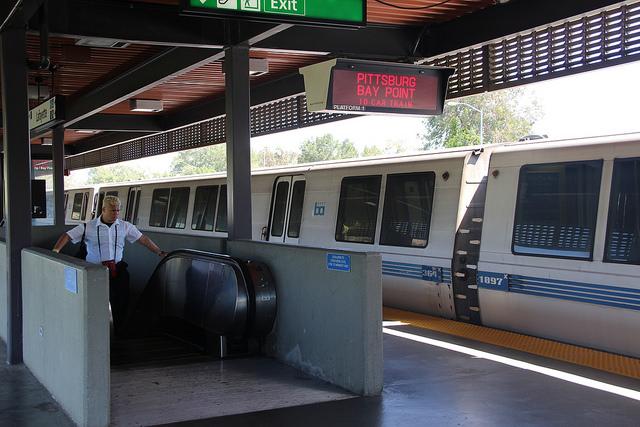Bay Area Governments Discuss Regional Challenges, Future
The Metropolitan Transportation Commission helps coordinate transportation networks throughout the region. (Inquirer/Marcel Scott)
February 8, 2017
On January 30th, the Association of Bay Area Governments, a regional council of municipalities, held a special assembly in San Francisco to discuss how to best address regional challenges like transportation needs and housing affordability.
Representatives from 101 incorporated cities and nine counties from around the Bay Area exchanged their thoughts on how ABAG could best serve its members, ahead of its impending merger with the Metropolitan Transportation Commission with Acting Executive Director Brad Paul presenting the consolidation process to the audience.
Guest presentations promoted regional collaboration between local governments with one proposing the creation of an affordable housing trust fund for the entire region.
After the last presentation members divided into four separate groups of around 40 members each to discuss the future merger and its impact.
Here are a few key takeaway opinions from their discussions:
Maintaining local control while still addressing regional challenges is essential.
During one group meeting Concord vice-mayor Edi Birsan told his peers, “while setting regional priorities is important ultimately each representative wants to know how they can make their city better.”
The merger should create measurement mechanisms to hold the consolidated organization accountable to the member governments to which it provides services.
ABAG-MTC should do a better job marketing its services to local governments so they understand what it does and how it can help them exchange best practices.
ABAG takes a more bottom-up collaborative approach that focuses on suggestions and incentives to implement changes while MTC takes a top-down approach to mandate changes.
Regional Housing by the Numbers:
Unsurprisingly housing was a topic of interest throughout the day. As San Francisco Supervisor Jane Kim noted in her introduction to the audience, being a sanctuary city meant nothing if undocumented immigrants could not afford to live in San Francisco.
Local governments and ABAG-MTC play a crucial role in meeting housing needs throughout the region because state law assigns every municipality a Regional Housing Need Allocation (RHNA) target to meet existing and projected housing needs for residents of all income levels.
The nine counties of the Bay Area have been tasked with accommodating 187,994 new housing units by 2023 in order to meet the region’s projected population growth of two million people, assuming a healthy regional economy.
RHNA targets categorize housing units based on the area median income (AMI). The four income categories for RHNA are very low (0-50 percent AMI), low (50-80 percent AMI), moderate (80-120 percent AMI) and above moderate (120-plus percent AMI).
According to the U.S. Census Bureau the median household income of six of the nine counties in the Bay Area in 2015 was between 81,129 and 125,900 dollars while the remaining three; Sonoma, Napa and Solano counties, had median household incomes between 64,285 and 81,128 dollars.
To date, the region as a whole has met 15 percent of its total RHNA target which equates to 27,715 new housing units. Of that number only five percent of new housing units built have been for very low income units, 10 percent have been for low income units and five percent have been for moderate income units while the remaining 80 percent have been for above moderate income units.
In Contra Costa County only 25 new housing units or one percent of its RHNA target have been built for very low and low income households combined since 2015 while six percent have been for moderate income units and 33 percent have been for above moderate income units.
Almost every municipality in the region, with the notable exception of Calistoga in Napa County which has met 617 percent and 500 percent of its RHNA targets for very low and low income housing units, has prioritized building housing for those who earn 120-plus percent of the area median income.
While the region is doing well to build new housing units to accommodate growth, so far most of these have been for high earners and the issue of affordability and accessible housing will not be resolved anytime soon.







































































